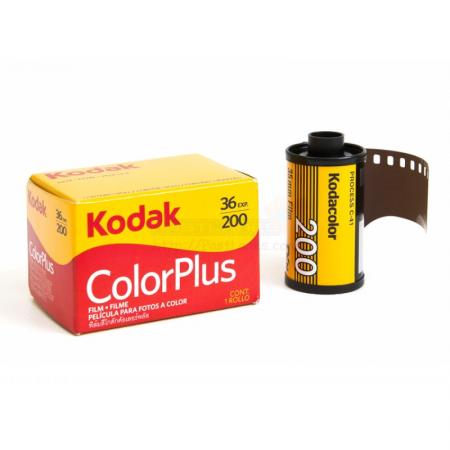
You could also first meter the scene and then lower your settings so you get one-stop lower. It is a black and white film that is processed in C41 type processing chemicals alongside color negative films. You should shoot it one-stop lower so that would be?Īnd now if it was a pack of expired film from 1999?
#Kodak c41 black and white film iso#
So for example you are using a 400 ISO film from 2009. This should only be applied to color negative film, slide film is ofter better to shoot on “normal “box speed.įor every TEN YEARS, a roll of film is expired shoot it ONE-STOP LOWER. You know, have a little bit more sensitivity for it. Some film might be stored in a fridge and some might not, so shooting expired film is always a chance of luck.īecause the film is expired you should keep in mind you could adjust the ISO to its “new age”.

If you want a new-looking film you should buy a new film and not expired right? Also, some may have a little bit of age to them as well. Packages may look different than shown because the designs change through the years. The film was initially released in 1972 in. Our expired film can be bought in several options, this depends on the specific film.įilm with “no box” means that we could not save the outer package, due to its age. KODAK - KODACOLOR II 100 was the first of a new generation of Kodak color negative films using the C-41 Process. If this is an expired film, it is untested and no guarantees are given. Kodak claims that Kodacolor was "the world's first true color negative film". In still photography, Kodak's Kodacolor brand has been associated with various color negative films (i.e., films that produce negatives for making color prints on paper) since 1942. The film was initially released in 1972 in 110 film size only so that non-Kodak processing labs would have time to set up lines using the C-41 process. It was designed as a major improvement to meet the needs of the small 13×17 mm negatives used in 110 films for the Kodak Pocket Instamatic cameras. If the black & white film is treated with the bleach-fix blix, all your images will be destroyed.Kodacolor-II was the first of a new generation of Kodak color negative films using the C-41 Process. C-41 is a chromogenic color print film developing process introduced by Kodak in 1972, superseding the C-22 process. The finished film should then be washed in running water to purge it of the processing chemicals. Next you fix the film using a typical black & white fix bath. You should follow the developing step by a stop-bath or water rinse. You would do better if you used a solution that is optimized to develop black & white film. The color film emerges, whereas the silver images are removed, and the resulting color images are a color negative.īottom line: You can use the C-41 developer to process black & white film. IF the C-41 solutions are of an abridged type, the bleach and the fix step are combined making a bleach-fix or blix. Next the C-41 process fixes the film using a typical fix bath. Its job is to convert the silver image back to a silver salt. The silver is opaque and thus veils the dyes. In the C-41 process, the film emerges from the developer with three dye images, and three silver images. The result will be a black & white negative. Since a black & white film is void of these incomplete dyes, no such action will occur. (panchromatic) B&W films is that it can be developed in C-41 (color processing). Should this happen, the dyes blossom and become cyan, magenta or yellow dye globules, based on which emulsion layer they are in. 35mm, ISO 400, fine grain, highly versatile black & white film that can be processed on the high street (in C41 chemistry). Kodak Black & White 400 Speed 24 Exposure 35mm Film (3 Pack). Its very fine grain, outstanding sharpness and high acutance make it the film.
#Kodak c41 black and white film plus#
Its job is to couple with incomplete dyes imbedded in the color film during manufacture. For high quality black and white photography, ILFORD FP4 PLUS is unrivalled. The C-41 color developer also contains a color developer. The result is a negative image of the original vista. The silver portion is precipitated as an opaque tuft of metallic silver. The halogen portion is dissolved by the waters of the developers. They are reduced to their two component parts which are silver and an halogen (Iodine – chlorine – bromine). Tetenal C41 developing kit The chemicals I use for developing colour film is the 2.


This is B&W film that you can develop in C41 chemicals. The developer then goes to work on the exposed silver salts. It also includes C41 black and white film, Ilford XP2 Super. Its job is to differentiate between exposed and non-exposed silver salts present on the film. The C-41 color developer is a typical (non-staining) black & white developer. We can develop any make of black and white negative film from 35mm to medium format and sheet film up to 8x10.


 0 kommentar(er)
0 kommentar(er)
